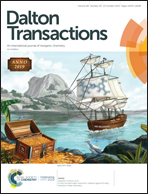2D ultrathin CoP modified MnxCd1−xS with controllable band structure and robust photocatalytic performance for hydrogen generation†
Abstract
Considerable efforts have been directed towards constructing high-efficiency, earth-abundant and low-cost photocatalysts for hydrogen evolution under visible light irradiation. In this work, 2D ultrathin CoP-decorated bimetallic MnxCd1−xS photocatalysts were developed based on the combined strategies of controllable band structure and co-catalyst modification. An optimal H2 production rate of 65 324 μmol g−1 h−1 was obtained for the Mn0.5Cd0.5S/CoP-4% sample under visible light irradiation, which was 4.26 times higher than that of pure Mn0.5Cd0.5S as well as 38.7 times that of pure CdS. UV-vis and MS characterization results showed that the introduction of Mn into CdS could change the band potential towards a more negative direction, which would be beneficial for water reduction. Moreover, the added CoP could act as a co-catalyst to facilitate the electron transfer and restrain the recombination of photogenerated electron–hole pairs, which was testified by photocurrent, PL and EIS analyses. This work paves the way to offer a new direction towards designing efficient photocatalysts for hydrogen evolution.



 Please wait while we load your content...
Please wait while we load your content...